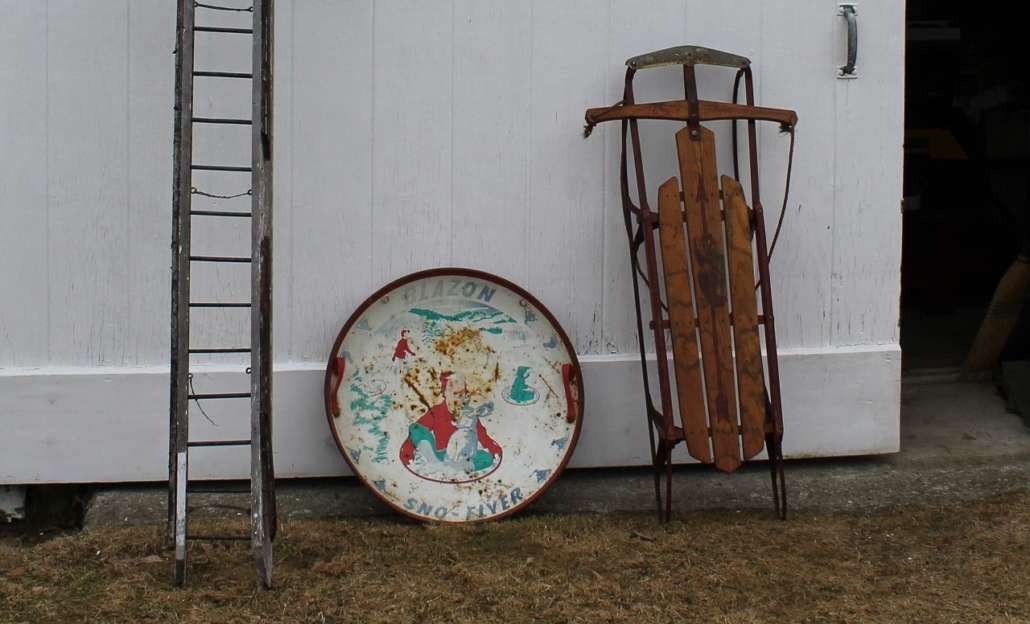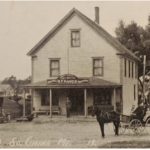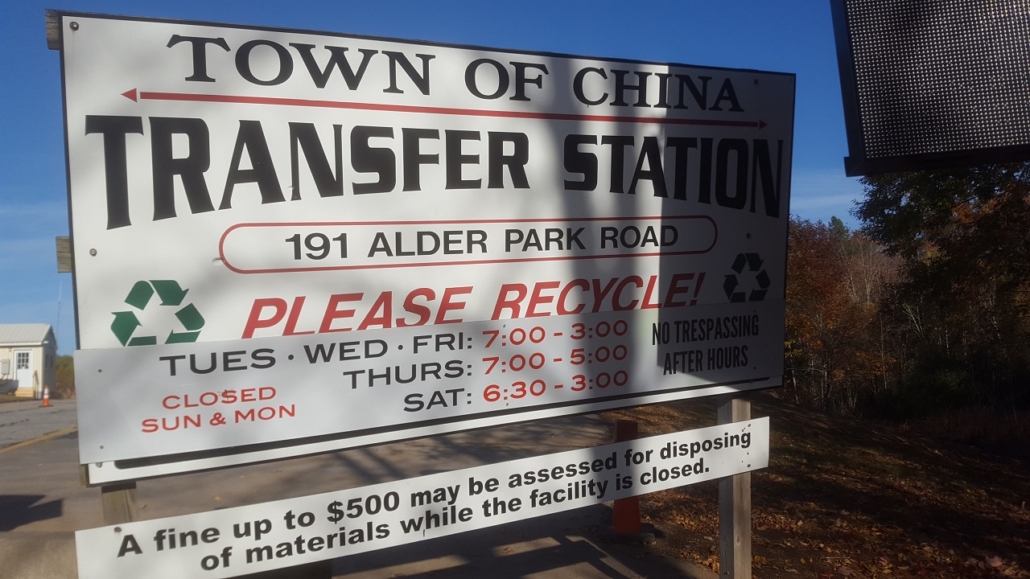A Maine rarity comes to China
by Bob Bennett
Many of we older Mainers spent much of our winters as kids outside, sliding down long hills on toboggans and other “vehicles” with runners. In some parts of our state, especially along the Downeast coast, one of the more widely seen sleds was known as a Cape Racer. While I haven’t found much information on these versions, the China Historical Society recently acquired one and it seems to be a true rarity. And, there are some ties to China. A quick look at those links starts us off.
Long-time China resident and antiques collector Dave Davis purchased the sled from a dealer in Searsport years ago. He says he did so because it was the longest version he had seen. It spent a long time in Dave’s garage and then emerged when he sold his house several years ago. The buyer, Bill Wahlfield, brought the sled outside a couple of summers ago and I first saw it in the grass next to his wood pile, and then supporting a newly planted tree. Bill had no idea of its function and I spent a fair amount of time trying to discover its use. It was obviously some kind of ice or snow vehicle due to its runners, but it was very long, about eight feet, and very narrow. Then, I ran into Mr. Davis at the South China Post Office a few weeks ago and he cleared up the mystery. It is a Cape Racer.
According to the information I found on line, this unique sled was first designed by a man named Martin Van Buren Gray, born in Brooksville, Maine in 1832. It apparently was named for Cape Rosier which is located near Blue Hill. The sled was later patented by a Percy Perkins who built a number of them and even sold some to Sears Roebuck in Boston. The sled was quite popular in the Hancock County area of Maine.
In an article published by the Deer Isle-Stonington Historical Society, a local named Monty Small wrote about his childhood sledding experiences and spoke well of the Cape Racer. “Some kids had store-bought Flexible Flyers, and some had homemade bobsleds that had two small sleds, one front and one rear, with a long plank in between. It would hold four or five kids, depending on the length of the plank. You steered with the front sled; usually with grab handles on the sled. My favorite sled was a “Cape Racer,” and lots of kids had one. Lyndon “Ham” Gross lived on the hill, and he had a real fast one named “Queenie.”
I always understood that this type sled was originally developed over in Cape Rosier, thus the name Cape Racer. They were indeed fast. They were made with two angled wooden side rails having polished steel runners. The rails were joined by a series of dowels set into the rails, and these are what you laid down on to slide. You crossed your arms in front of you and pulled up on the right rail to go right and left rail to go left. You also used a little body motion to help turn.” From other comments, much of these kids’ riding seems to have been on snow covered roads.
The donated sled generally matches Monty’s description. The dowels he mentioned that held the runners in position are actually steel rods, some threaded on each end and screwed into the runner supports. There is about two inches of “side-play” to both left and right that would have allowed some steering ability. The racer will ultimately be displayed in or museum and while it likely will not ever travel in the snow it is certainly a piece of history.
CORRECTION: In the March 21, 2024, issue of The Town Line, the Cape Racer was misidentified. The Cape Racer is the object on the left (in the picture above). Center is a 1960s “flying saucer” like sled, and the right is a traditional flex sled. It was an editing error.
Responsible journalism is hard work!
It is also expensive!
If you enjoy reading The Town Line and the good news we bring you each week, would you consider a donation to help us continue the work we’re doing?
The Town Line is a 501(c)(3) nonprofit private foundation, and all donations are tax deductible under the Internal Revenue Service code.
To help, please visit our online donation page or mail a check payable to The Town Line, PO Box 89, South China, ME 04358. Your contribution is appreciated!






Leave a Reply
Want to join the discussion?Feel free to contribute!